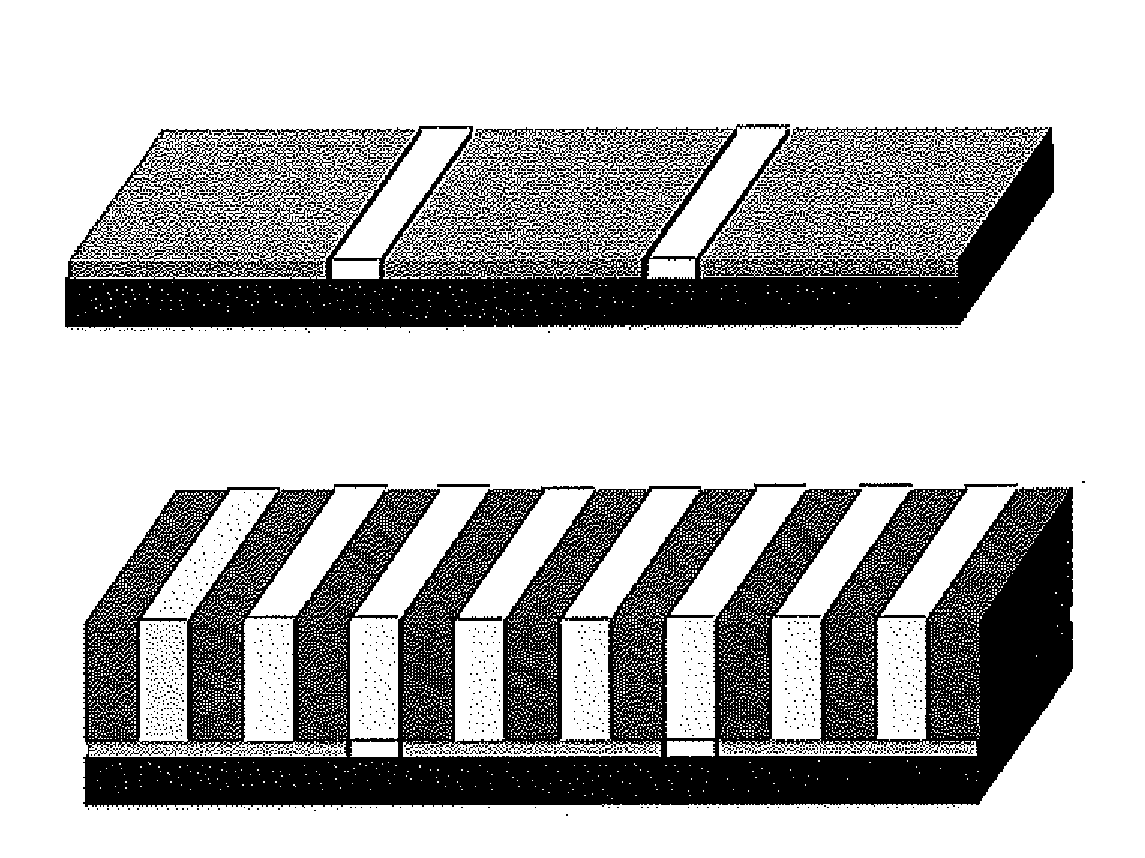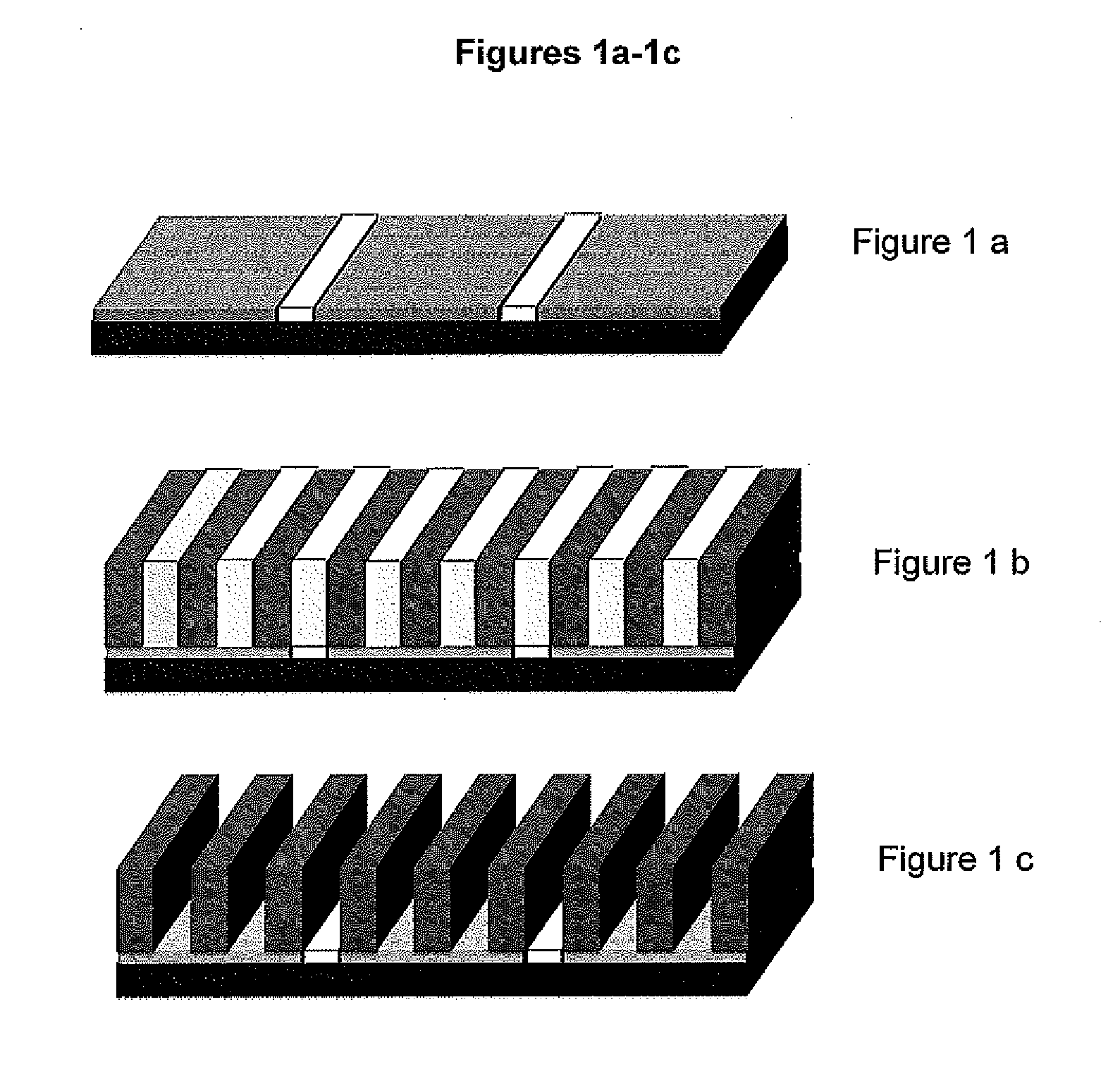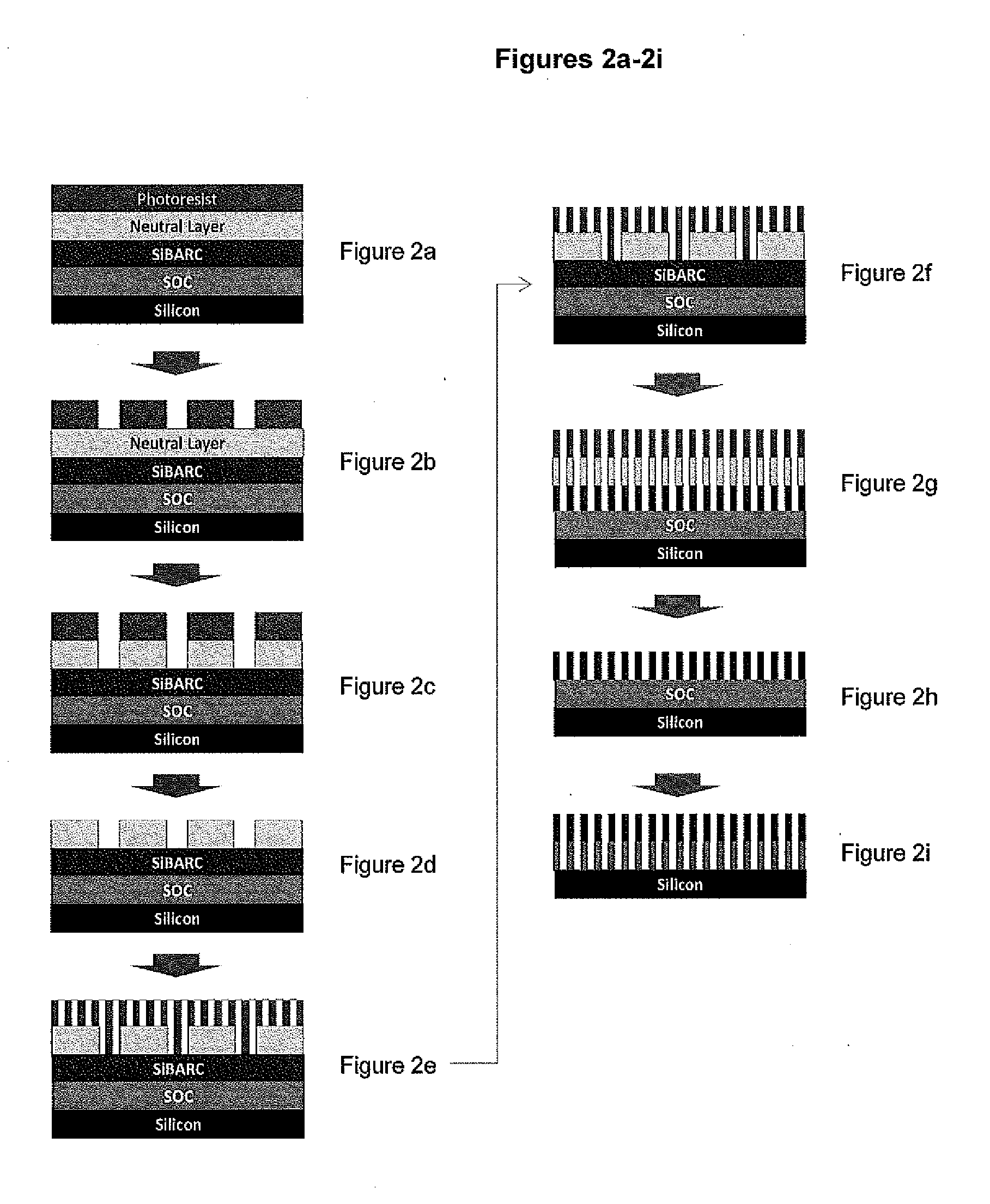Compositions of neutral layer for directed self assembly block copolymers and processes thereof
a technology of self-assembly block and neutral layer, which is applied in the field of compositions of neutral layer for directed self-assembly block copolymers and processes thereof, can solve the problems of difficult to achieve further reduction of pattern dimensions, the limited dimension of integrated circuit features, and the region exposed to radiation to become less removable with a developer solution or by conventional ic plasma processing
- Summary
- Abstract
- Description
- Claims
- Application Information
AI Technical Summary
Benefits of technology
Problems solved by technology
Method used
Image
Examples
example 1
Synthesis of Neutral Polymer 1
[0047]A solution was prepared containing 0.1642 g of AIBN, 2.6129 g of 4-vinylbenzocyclobutene (0.0200 mole), 2.0944 g of styrene (0.0201 mole) and 6.001 g of methyl methacrylate (0.0599 mole) in a 250 ml flask with a magnetic bar and cold water condenser. To this solution was then added 25.44 g of 2-butanone giving a clear solution after stirring. After nitrogen gas was passed to purge for 30 minutes, the flask was immersed in 80° C. oil bath. Polymerization was carried out at this temperature for 19 hours. The reaction solution was then allowed to cool to room temperature and poured slowly into methanol with stirring to precipitate the crude polymer. The crude polymer obtained was isolated by filtering. The polymer was purified by dissolving it into 2-butanone and precipitated again in methanol. The purified polymer was dried in a 50° C. vacuum oven until constant weight (6.8 g). The polymer had a Mw of 18515 end and Mn of 11002 g / mol. This polymer wa...
example 2
Synthesis of Neutral Polymer 2
[0048]A solution was prepared containing 0.165 g of AIBN, 2.6188 g of 4-vinylbenzocyclobutene (0.0201 mole), 6.2705 g of styrene (0.0602 mole) and 2.0022 g of methyl methacrylate (0.0200 mole) in a 250 ml flask with a magnetic bar and cold water condenser. To this solution was then added 25g of 2-butanone giving a clear solution after stirring. After nitrogen gas was passed to purge for 30 minutes, the flask was immersed in a 80° C. oil bath. Polymerization was carried out at this temperature for 22 hrs. The reaction solution was then allowed to cool to room temperature and poured slowly into methanol under stirring to precipitate the crude polymer. The crude polymer obtained was isolated by filtering. The polymer was purified by dissolving it into 2-butanone and precipitated it again in methanol. The purified polymer was dried in a 50° C. vacuum oven until constant weight (5.8 g). The polymer had an Mw of 16,180 g / mol and Mn of 9,342 g / mol. This polyme...
example 3
Synthesis of Neutral Polymer 3
[0049]A solution was prepared containing 0.33 g of AIBN, 7.81 g of 4-vinylbenzocyclobutene (0.0600 mole), 10.45 g of styrene (0.100 mole) and 4.0 g of methyl methacrylate (0.0399 mole) in a 300 ml flask with a magnetic bar and cold water condenser. To this was added 52.6 g of 2-butanone giving a clear solution after stirring. After nitrogen gas was passed to purge for 30 minutes, the flask was immersed in an 80° C. oil bath. Polymerization was carried out at this temperature for 20 hours. The reaction solution was allowed to cool to room temperature and poured slowly into methanol under stirring to precipitate the crude polymer. The crude polymer obtained was isolated by filtering. The polymer was then purified by dissolving it into 2-butanone and precipitated into methanol again. The purified polymer was dried in a 50° C. vacuum oven until constant weight (11.6 g). The polymer had a Mw of 17086 g / mol and Mn of 10005 g / mol. This polymer was designated i...
PUM
| Property | Measurement | Unit |
|---|---|---|
| temperatures | aaaaa | aaaaa |
| thickness | aaaaa | aaaaa |
| thickness | aaaaa | aaaaa |
Abstract
Description
Claims
Application Information
 Login to View More
Login to View More - R&D
- Intellectual Property
- Life Sciences
- Materials
- Tech Scout
- Unparalleled Data Quality
- Higher Quality Content
- 60% Fewer Hallucinations
Browse by: Latest US Patents, China's latest patents, Technical Efficacy Thesaurus, Application Domain, Technology Topic, Popular Technical Reports.
© 2025 PatSnap. All rights reserved.Legal|Privacy policy|Modern Slavery Act Transparency Statement|Sitemap|About US| Contact US: help@patsnap.com



